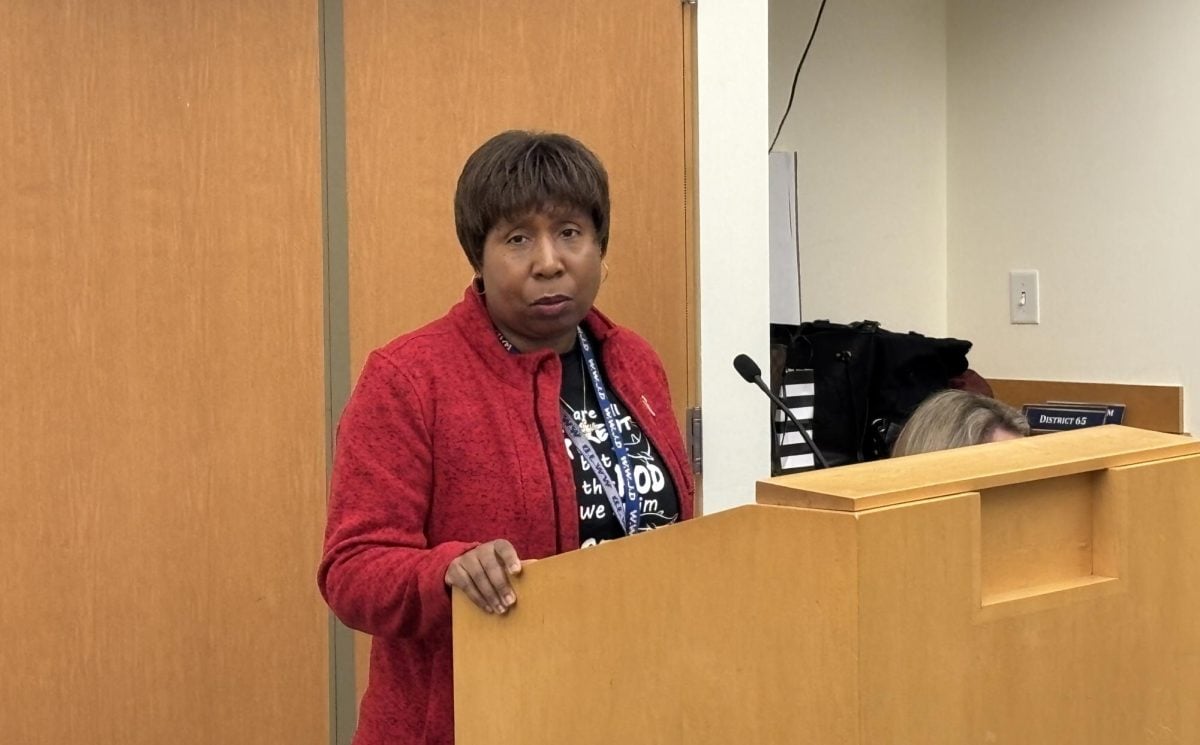Lindsey Rose, Evanston Township High School’s multilingual services director, calls the school’s emergent multilingual courses “a little United Nations.”
The ETHS multilingual services department serves over 70 students who speak over 45 languages, ranging from Spanish to Haitian Creole, according to Rose.
The department was established last year in part because of an influx of asylum-seeking students, many who have come from Latin American countries to the Chicago area since 2022.
The department as a whole is currently rolling out services — including individualized plans and specific courses — for all emergent multilingual students on a grade-by-grade level, Rose said. This year, she said, the department began services for sophomores and next year, it will begin them for juniors.
Asylum-seeking students take a placement test when they enroll at the high school. Some students move up in non-English language courses and math courses quickly, said Sara Holic, a teacher who has been in the multilingual services department since its founding.
For English courses, most asylum-seeking students are placed in the sheltered English instruction program, which tracks students based on language acquisition, not grade level, Holic said. The curriculum follows what the “mainstream” English courses are learning, she added.
Rose said the department differentiates the resources students receive based on their needs.
“We know, based on a student’s lived experience and their exposure to English language and instruction, that they’re going to require different supports,” she said.
Asylum-seeking students who are transitioning from Evanston/Skokie School District 65 to ETHS receive an individualized course plan.
Incoming freshmen also participate in the school’s summer school program, where they take English as second language enrichment courses and learn how to navigate the building with the help of multilingual paraprofessionals.
Multilingual services teachers also build close relationships with asylum-seeking students’ families to build a community within the sheltered English program, Rose said.
“We try to start building those parent, family relationships right away so families know who they can reach out to and who they can go to for support,” she said.
Each asylum-seeking student has a point person in a multilingual services teacher, who checks in with families when their student is struggling academically and helps families navigate resources for healthcare, legal services and any information they might need, Holic said.
During the intake process for new students, she said a multilingual services teacher interviews the family and student to understand their “powerful and personal stories.”
“It’s a way to ensure that we are the point people for the other teachers to learn who this child is and things that can help inform their instruction in order to help support the kid,” Holic said.
Each multilingual services teacher oversees a caseload of about 20 asylum-seeking students and checks in with additional students who have shifted out of the sheltered program into courses co-taught by a general content specialist teacher and an ESL-certified teacher, Holic said.
ETHS Director of Communications Reine Hanna emphasized that multilingual services teachers also led most communications between the school and families in their capacity as point people.
One tool teachers and staff use is TalkingPoints, a platform that translates text messages and sends them to families, according to Hanna.
She said the district is piloting the platform this year, and it has been successful so far. She added that translation is an “easy” answer to making information accessible to all families, and the district plans to improve access in other ways, too.
“A lot of that work has been continued outreach and thinking about new ways that we can make our information and resources available to our families in a way that actually reaches them and makes sense to them,” Hanna said.
Hanna said the multilingual services department used TalkingPoints to help schedule parent-teacher conferences with asylum-seeking families.
Post-pandemic conferences are five minutes long and on Google Meet, Hanna said. To make these meetings more accessible to families with English language barriers, multilingual services teachers hand-scheduled the conferences and planned for 10 minutes per family, Holic said.
Families were also invited to come to the school and, with the help of a translator, do their conferences online, she added.
Holic emphasized that the on-site parent-teacher conferences are part of the school’s initiatives to help families adapt to their new community.
“We’re trying to get families to come in and feel like they are a part of this very large high school community,” she said.
Email: [email protected]
X: @anavi_52
Related Stories:
— D202 board passes Fiscal Year 2025 Capital Improvement Plan, develops land acknowledgement
— ETHS’ 67th YAMO production aims to get out the vote
— ETHS community slowly adjusts to new ‘Bell-to-Bell No Cell’ policy


















